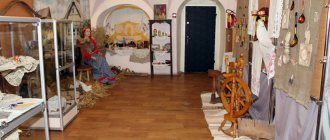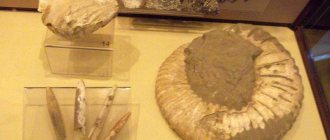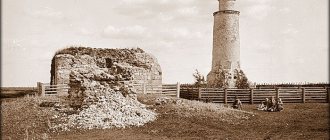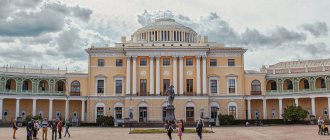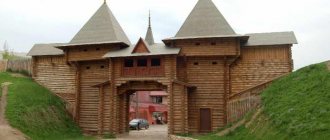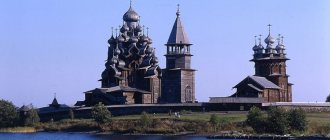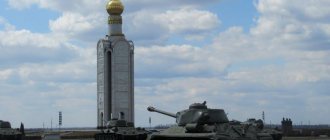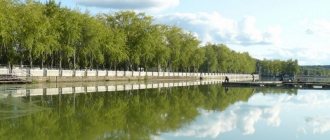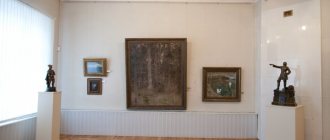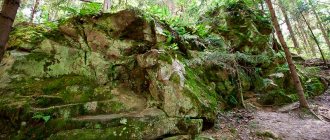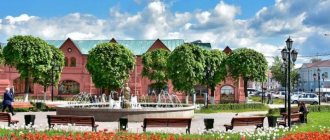The history of the Kungur Historical, Architectural and Art Museum-Reserve began on July 1, 1909. Then the vowels of the Kungur City Duma decided to create a city museum in honor of the famous countryman K. T. Khlebnikov. The grand opening of the first exhibition took place on February 19, 1911, when all of Russia celebrated the 50th anniversary of the abolition of serfdom.
Over its hundred-year history, the museum has experienced many changes. The evacuation of 1918, the journey from building to building, the closure in 1936 and the revival four years later. The name of the museum has changed several times. In the first decades of Soviet power, it was known as a science museum. Since 1940, for forty-eight years it was known as the Kungur Museum of Local Lore, and then as the Museum of Local Lore of the City of Kungur. Since 2006, a new page in museum history began. The museum was renamed the Kungur Historical, Architectural and Art Museum-Reserve. It includes: the Museum of Local Lore (located in the building of the City Magistrate (1758-1762), founded in 1909), the Museum of the History of Merchants (located in the building of the Small Gostiny Dvor (1974), opened in 2007) and Art Museum (located in the Yukhnev mansion (late 19th century), opened in 2006). The museum collections number over 100,000 items.
Brief information about Kungur
Kungur is located at the confluence of the Iren and Sylva rivers in the Middle Urals, 90 km southeast of Perm. Administratively, the city is part of the Perm Territory and at the same time is the center of the Kungur region.
Kungur is located near the regional center - the city of Perm
The area of the city is about 68 square meters. km. The length from north to south is about 15 km, from west to east - about 8 km. The population is over 66 thousand people.
Economically, Kungur does not have a clearly defined industrial leader. Most of the enterprises are concentrated in the food industry. The tannery and shoe factory, which appeared in the 18th century, is of great importance.
In recent years, city authorities have been paying serious attention to the development of the tourism component in the Kungur economy. This is facilitated by interesting natural places and historical sights of the city.
History of Kungur
The year 1663 is considered to be the founding of Kungur, but in reality a fort with that name arose 15 years earlier than the official date. The first Kungur was located 17 km from the modern city. Now there is a village on this site. The reason for the transfer was the unfavorable defensive position of the fortress. This led to the capture of Kungur by the rebel Bashkir tribes and the death of almost all the defenders of the small fort.
New Kungur was built in a more favorable place, from a military point of view: the steep, high bank of the river served as excellent protection from attack. In 1720, the city became the administrative center of one of the Ural mining districts, and its convenient location eventually turned it into a large merchant center of the Cis-Ural region. Contemporaries recognized Kungur as one of the richest cities in the region. Evidence of this is the monuments of commercial architecture and merchant mansions that formed the attractive appearance of the settlement.
Museum of Merchant History
The exposition of the Museum of the History of Merchants is located in the building of the Maly Gostiny Dvor (38 Gogol St., a cultural heritage site of regional significance), built in 1874 at the expense of M. I. Gribushin. The creation of the museum was carried out with the financial support of LUKOIL-Perm LLC. Main sections: history of the Great Siberian Highway; leather and shoe making; ceramics production; grain trade and tea trade; charity and patronage; merchant life. Among the numerous exhibits are awards brought by Kungur merchants from international and Russian exhibitions, porcelain Chinese vases from the Gribushins’ collection, porcelain and glassware from a treasure found in 1963. The exhibition hall of the museum, located in the ground floor of the building, is stylized as a teahouse of the early twentieth century. Tea-themed exhibitions are organized here, and costumed events with tea drinking are held: “We don’t miss tea,” “Visiting the samovar,” “At the Kungur teahouse.”
—Natalia Pastukhova 13:52, March 2, 2012 (MSK)
How to get to Kungur
While maintaining its historical role, Kungur remains an important transport hub in the Urals. Two roads pass through the city:
- R-242 is a federal highway connecting Perm and Yekaterinburg;
- R-343 is a road of regional importance between Solikamsk and Kungur.
Parallel to the P-242 highway runs a section of the Trans-Siberian Railway connecting Moscow and the Far East. Travel time by train from Moscow to Kungur will be approximately 24 hours.
The fastest way to get to the city is to use air travel, arriving at Perm International Airport. Regular buses and electric trains run between Perm and Kungur. The travel time will be a little over an hour.
How to get around Kungur
The city, whose area is almost 70 km2, has 12 public transport routes, namely buses and minibuses. The fare from January 1, 2022 is 25 rubles.
Taxi companies operate in Kungur. The cost of travel around the city is 80-150 rubles, to nearby villages - up to 850 rubles. Call a taxi by phone or mobile application "Yandex", "Troika", "Lucky". The sights of Kungur, carefully protected by the city, are the pride of the entire region, heading the list of the most visited sites in the Urals.
Article design: Mila Friedan
Sights of Kungur
Kungur is a typical merchant city of the Russian hinterland. Its main attractions are pre-revolutionary residential and administrative buildings and Orthodox churches. The saturation of Kungur with ancient objects made it possible to include it in the “Historical Cities of Russia” program in 2010.
Ice cave
The main attraction of Kungur is the Ice Cave. This natural site is known far beyond Russia, so foreign tourists are frequent guests in the city. The Ice Cave is one of the largest in Europe: the length of the underground passages is 5600 m. Of these, 1500 m are accessible to tourists. The discoverers discovered large accumulations of ice in the underground grottoes, so the cave was called “Ice Cave”.
The entrance to the cave is at the foot of the Ice Mountain
The existence of the cave has been known since the time of the first Russian settlers. There were legends that pioneers were hiding in the dungeon back in the time of Ermak. The first detailed description of the cave was compiled in 1703 by the famous Russian cartographer Remezov. During these studies, Orthodox crosses, icons and other attributes of church life were discovered in the grottoes.
Regular excursions were started by a representative of a noble Kungur family, Alexander Khlebnikov. Having visited the USA and seen how a visit to the famous Mammoth Cave was organized there, Khlebnikov decided to apply foreign experience in his homeland. The entrepreneur rented a plot of land near the entrance to the grotto and began leading tours himself.
During Soviet times, the cave turned into a full-fledged tourist complex. Inside there are excursion routes and lighting equipment installed, which made it possible to create amazing light shows in the underground halls.
When visiting the cave, you need to dress warmly - the air temperature in some grottoes is below zero even in summer.
Practical information:
- address: c. Filippovka;
- ticket price: adult - 600 rub. (on weekends - 700 rubles); for children - 400 rub. (on weekends - 500 rubles);
- working hours: from Sunday to Thursday - from 10.00 to 16.00; on other days - from 10.00 to 18.00.
Photo gallery: Ice cave
The first grotto of the cave - Diamond - is decorated with an ice statue of an old man
The abundance of ice in the Polar Grotto gave the cave its name
Illumination completely transforms the Polar Grotto
A bat figurine and red lighting create an ominous atmosphere in Dante's grotto
Traces of the prayer life of Orthodox hermits were once found in the Grotto of the Cross
The underground lakes in the Long Grotto are crystal clear
Illumination creates the illusion of the seabed in the Coral Grotto
Museum of Karst and Speleology
Near the exit from the Ice Cave there is an inconspicuous building of the Museum of Karst and Speleology with an exhibition of Ural natural minerals. The institution was created in 2005 at the Mining Institute of the Ural Branch of the Russian Academy of Sciences. The building also houses the Mining Laboratory, whose workers are engaged in research into the Ice Cave.
The Museum of Karst and Speleology introduces visitors to the natural minerals of the Kungur region
The issue of creating a speleological museum has been repeatedly raised by employees of the Mining Institute and the Ice Cave since 1965. The lack of exhibits and premises, and lack of finance did not allow this idea to be realized. In fact, it turned out that two small halls were enough for the museum, and the lion's share of the exhibits were the personal collections of the laboratory employees themselves and the cave tour bureau. In addition to the exhibition of minerals, the museum also talks about the nature of karst phenomena and the history of the Ice Cave.
Address: s. Filippovka. Ticket price is 50 rubles.
Kungur Historical, Architectural and Art Museum-Reserve
In 2006, the three main museums of Kungur became part of a single museum-reserve. The number of the fund has reached 116 thousand items. The collection was based on exhibits from the Museum of Local Lore, the oldest in the Urals.
Museum of Local Lore
You should start your acquaintance with Kungur with a visit to the Museum of Local Lore, which is housed in one of the oldest stone buildings in the city. It was built between 1758 and 1762 and originally served as the seat of the city administration. In the chronicles of Kungur, the building is better known as the House of the Voivode, or the City Magistrate. The ground floor housed drinking establishments, and the second floor housed the city authorities, who controlled the income from the sale of strong drinks.
The facade of the Kungur Museum of Local Lore above the second floor windows is decorated with an original beetle ornament, preserved from the 18th century
The local history museum was located in the magistrate's building in 1955, although it opened in Kungur back in 1909. The halls display exhibits ranging from the early archaeological cultures of the Urals to modern times. Of particular interest are the 122-mm howitzer from the Civil War and the standard of the Catherine Regiment of 1774 on display in the museum.
Information about the museum:
- address: st. Gogol, 36;
- work schedule: daily - from 10.00 to 17.00, except Monday and Tuesday;
- ticket price: adult - 80 rubles; for children - 40 rubles; for students and pensioners - 50 rubles.
Kungur Art Museum
The art museum is housed in a mansion built at the end of the 19th century. The owner of the house, Grigory Ivanovich Yukhnev, belonged to an old merchant family of Kungur. After the unexpected death of the entrepreneur, the mansion went to his wife, and then became the property of the city mayor, who married her. In 1915, the house was leased to a printing house and post office. After the revolution, the building housed various government agencies. This continued until 2004, when a museum settled here.
The first and second floors of the Kungur Art Museum were built 50 years apart, which explains the difference in their appearance
The museum exhibits paintings by famous local artists Zhuravlev and Melentyev. Some of the works were transferred to Kungur from the Perm Museum of Art. In addition to paintings, the halls display stone-cutting products, ceramics and sculpture. Of particular interest are the plaster figurines skillfully made by workers of the Kungur artel of disabled people.
Address: st. Oktyabrskaya, 21. Opening hours and ticket prices for museums are the same.
Museum of Merchant History
The Museum of the History of Merchants opened in 2007 and is located on the premises of the Maly Gostiny Dvor. The building was built in 1874 at the expense of the Kungur merchant of the first guild, Gribushin. For this reason, for quite a long time the Gostiny Dvor was called the “Gribushinsky building”. Upon completion of construction, Gribushin donated it to the city. This event took place on the eve of the holiday dedicated to the centennial anniversary of the siege of Kungur by Pugachev’s troops. The only requirement put forward by Gribushin to the city authorities is that half of the income from renting out the Gostiny Dvor should go to scholarships for poor students.
Oriental and Old Russian motifs were used in the design of the building of the Museum of the History of Merchants
The museum exposition tells about various aspects of the merchant life of Kungur:
- leather and footwear industry;
- pottery;
- tea and bread trade.
Much attention is paid to recreating merchant life, interiors and costumes.
Museum address: st. Gogol, 38. Opening hours and ticket prices for museums are the same.
Bolshoi Gostiny Dvor
Along with the Small Gostiny Dvor, which now houses the Museum of the History of Merchants, there is also a Large Gostiny Dvor in Kungur. This is the only commercial building of this type that has survived in the Urals. The building, built in 1865 according to the design of the architect Karvovsky, became the hallmark of merchant Kungur. Gostiny Dvor in plan is a closed polygon, along the perimeter of which there are shopping arcades and warehouses.
Together with the Tikhvin Bell Tower, the Big Gostiny Dvor forms a memorable image of Kungur
Until recently, Gostiny Dvor had traditional commercial significance: the building housed offices and shops. The tenants did not take proper care of the safety of the premises, and over time the building acquired a rather unsightly appearance. The issue of restoration of this object is currently being decided. Address: Cathedral Square, 1.
Religious sites
There are many preserved temples in Kungur that will interest connoisseurs of church architecture.
Temple of the Tikhvin Icon of the Mother of God
The Temple of the Tikhvin Icon of the Mother of God - the main one in Kungur - has existed since approximately the middle of the 18th century. In the 80s of the 19th century, the church underwent reconstruction. In particular, a new 70-meter bell tower was erected. Immediately after construction, the tower tilted 3.5 degrees, ending up on the world list of “leaning” towers. During the Soviet years, the church building housed a children's cinema, which at one time was considered the best in the Perm region. In 2002, the temple returned to the fold of the church, and restoration work began. Address: st. Sitnikova, 52.
The bell tower of the Church of the Tikhvin Icon of the Mother of God has a slight slope
Transfiguration Church
The Transfiguration Church is one of the few surviving examples of the “Ural Baroque”, built in 1781. Its peculiarity is two floors. On the first is the Church of the Kazan Icon of the Mother of God, on the second is the Church of the Transfiguration of the Lord. The building was returned to believers in 1994, and the restoration of the original appearance of the church continued for about 10 years. Address: st. Uralskaya, 6.
Snow-white walls and a green roof make the Transfiguration Church stand out from the general background of the city.
Cathedral Mosque
The Kungur Mosque is a monument to human perseverance. The temple was built in 2007 with donations from the Muslim community. For almost 8 years the building remained at the foundation level. Lack of funds did not allow construction to continue, but thanks to the help of a number of organizations and the city public, the mosque was completed. Address: st. Sitnikova, 7.
The construction of the Cathedral Mosque was helped by the famous public figure of Kungur Amir Makhmudov
Kungur exotica
There are two unusual monuments in Kungur that will definitely decorate a traveler’s photo album:
- The center of the world. This unusual composition appeared in the city in 2007 thanks to the efforts of local public figure Amir Makhmudov. The monument does not claim to assign Kungur the status of any geographical center. The idea was to give originality to the city's appearance as part of the program "Kungur - the cultural center of the Perm region." The idea of the monument was awarded several awards as the best modern tourist attraction. Address: intersection of st. Uralskaya and Gogol.
Any tourist can be proud of a photograph against the backdrop of the Navel of the Earth - Nikita Letun. There is a legend that during the time of Ivan the Terrible, in the Aleksandrovskaya Sloboda near Moscow, one young man built artificial wings and, jumping from the bell tower, made the first flight in Rus'. Kungur aviation enthusiasts decided to honor the memory of the Russian Icarus and erected a monument to Nikitka in the historical center of the city. The monument was built in 2009. Address: square at the intersection of Gogol and Oktyabrskaya streets.
Nikitka Letun became the second exotic attraction of Kungur
Museum of Local Lore
The oldest is the local history museum, the exhibition of which has been housed in the building of the city magistrate since 1955 (Gogol St., 36. A cultural heritage site of federal significance). The halls of the history departments tell about the archaeological past of the Kungur region, the founding of the city of Kungur, and the socio-economic development of the territory in the 18th-20th centuries. Here you can see unique items related to the defense of Kungur in 1774 during the Peasant War under the leadership of E. I. Pugachev. Books from the library of K. T. Khlebnikov, which were bequeathed to the scientist’s native Kungur and formed the basis of the city’s first public library, are also presented. A distinctive feature of the exhibition of the nature department is materials about the karst of the Sylvensko-Irensky river. Unique minerals, instruments, photographs, documents, books telling about the history of cave exploration are demonstrated. Museum visitors can take a photo with the oldest guide and popularizer of the Kungur Ice Cave A.T. Khlebnikov, whose figure is presented in one of the halls. Until 1955, the Kungur Museum of Local Lore huddled in small rooms of a tourist’s house, located next to the Ice Cave. The long-term dream of the Kungur people to place a museum exhibition in the building of the city magistrate came true thanks to Marshal G.K. Zhukov. At that time, this oldest building housed a military commandant's office. The outstanding Soviet commander repeatedly came to Kungur for inspections, and the Kungur people turned to him with a request to facilitate the transfer of the city magistrate’s building to a museum. G.K. Zhukov not only helped in this difficult matter, but also left his portrait with a dedicatory inscription as a keepsake for the museum. It can be seen in the exhibition.
Winter and summer in Kungur
City authorities are actively working to make Kungur attractive for visiting at any time of the year. Natural and climatic conditions made it possible to create a ski infrastructure in the city for winter recreation, and to hold a grand Aeronautics Festival in the summer.
Skiing
There are two ski resorts in Kungur, which are located on the slopes of Ice Mountain:
- "Stalagmite". This ski resort is part of the hotel complex of the same name and is located in the suburb of Kungur, the village of Filippovka. There are 4 trails at the base with a maximum height difference of 60 m and a length of 200 m. The complex is equipped with a rope tow. Practical information:
- cost of daily ski rental - from 400 to 900 rubles;
- the cost of the lift is 60 rubles. in one lift.
The slopes of the Stalagmite base attract mainly experienced skiers - "Firefly". This complex operates on the basis of a children's and youth sports school and is located at st. Uralskaya, 95. The base offers hotel services, meals, and equipment rental. Unlike the Stalagmite base, the Firefly complex is more aimed at children. The trails here are not difficult and are quite suitable for initial training. Practical information:
- cost of daily ski rental - from 300 to 800 rubles;
- the cost of the lift is 40 rubles. in one lift.
The gentle slopes of the Svetlyachok base are ideal for initial ski training
Aeronautics Festival "Sky Fair"
The aeronautics festival “Sky Fair” became a tradition for Kungur in 2002. The initiator of the event was retired military pilot Andrei Vertiprahov. In collaboration with Kungur public figure Amir Makhmudov, also a big aviation enthusiast, this event was turned into an important event not only for Kungur and the Perm region, but also for Russia. Aeronauts from abroad began to actively participate in the festival. The event is held annually at the end of June and ends with the celebration of the city's day.
The rise of hot air balloons in the night sky is an incredibly beautiful spectacle during the Sky Fair ballooning festival.
Art Museum
The art museum was opened in 2006. It is located in the mansion of the Kungur merchants Yukhnevs, built in 1908 (Oktyabrskaya St., 21). The halls of the museum display art ceramics, products made of soft ornamental stone and products of the Kungur artel named after. XVIII party conference, as well as paintings by Russian painters of the twentieth century. The stone-cutting collection includes works by the most famous artists and craftsmen of the 20th century, representatives of the Kungur stone-cutting school: A. F. Butakov, A. E. Popov, M. G. Lisunov, S. N. Chekhomov, A. I. Shadrin, A. Y. Shiryaeva, G. M. Kovaleva, A. M. Ovchinnikova, S. S. Krivoshchekova, A. V. Ovchinnikova, S. O. Nechaeva, F. P. Ovchinnikova, Yu. S. Krivoshchekova. Looking at these exhibits, one can admire for a long time not only their artistic perfection, but also the beauty of the material: translucent, as if glowing from within, selenite, multi-colored gypsum, sometimes black, sometimes gray soapstone. It also displays products by unknown authors of the first half of the 20th century: a herd of elephants, which were given “for good luck”, writing instruments, boxes, a tray in the shape of a horseshoe. The collection of Kungur ceramics reflects the diversity of local ceramic production from the late 19th to early 21st centuries. These include peasant pottery, stove tiles, and products from local semi-faience factories and factories at the turn of the 19th and 20th centuries. The products of the Kungur Art Products Factory and its successor, Kungur Folk Crafts LLC, are distinguished by their variety of shapes and richness of color solutions. And the funny ceramic figurines created by the artist E.V. Malkov will bring a smile to the faces of both children and adults. For many visitors, a meeting with childhood is an acquaintance with the collection of products of the artel named after. XVIII party conference. Even twenty years ago, such plaster sculptures as “Mistress of the Copper Mountain”, “Vasily Terkin”, “Old Man Hottabych” could be seen far beyond the borders of Kungur.
Holidays with children in Kungur
Parents can easily find traditional fun for children in the city park of culture and recreation. It is located within the boundaries of Oktyabrskaya, Gogol, Lenin, Sovetskaya streets. If children want something unusual, then welcome to the village of Ermak or the fairy-tale world of the Ice Cave.
Ermaka village
The ethnographic complex “Ermak’s Village” is a fenced area with wooden huts in the Old Russian style and many sculptures depicting the plots of Russian fairy tales:
- "Turnip";
- "By magic";
- "Dragon".
The ethnographic complex is part of the Ice Cave Museum-Reserve and is located in close proximity to the entrance. Open seven days a week. Ticket prices are 25–35 rubles.
Photo gallery: sculptures in “Ermak’s Village”
The sculpture “Turnip” plays on the main plot of the fairy tale, contained in the phrase “They pull and pull, but they can’t pull it out.”
The sculpture “At the Command of the Pike” depicts the fairy-tale hero Emelya sitting on a Russian stove
The Serpent Gorynych occupies a worthy place among fairy-tale heroes and sculptures in the village of Ermaka
Video: Ermaka village
The fairy-tale world of the Ice Cave
In addition to regular educational excursions, the Ice Cave offers special programs for children. One of the popular excursions is the project “Tales of Bazhov”. During the program, the guide acts as a narrator, commenting on animated scenes - a meeting with Danila the Master and the Mistress of the Mountain. The length of the excursion space is 1500 m, duration is 1.5 hours.
Animated stories from the fairy-tale world of the Ice Cave will be interesting for children
Monuments of Kungur - TOP-7 things to see
In any city or town, monuments are an integral part of its history. They are usually dedicated to some historical figure or events that once took place here.
Memorial sign to the pioneers of the Kungur region
- Address: Gogol street.
According to the existing legend, Ermak Timofeevich and his squad spent the winter in these places in 1580 during a campaign in Siberia. The monument is made in the form of a Cossack plow. A guiding star placed on a sail leads pioneers to new lands and opens up new horizons.
The shuttle is installed on a high stele. The sculptural composition is located on the embankment near the Sylva River. The monument was erected in 1990. It harmonizes well with the surrounding landscape.
Sylvensky Bridge
- Coordinates on the map: 57.432585, 56.942023.
This building can be considered a monument only conditionally. The bridge is a vivid reminder of the confusion and indifference to one's work during the formative years of Soviet power. Tradition says that the bridge, built in 1932, was supposed to be used as a railway crossing in Kurgan. But, due to someone's oversight, he was sent to Kungur.
They say that this is the only bridge in the Urals that has a similar design. And, although the legend is not confirmed by any documents, it is part of the history of the city. The bridge still serves the townspeople today to cross the Sylva.
Obelisk to the defenders of Kungur from Pugachev’s troops
- Address: Karl Marx street.
In 1774, Pugachev’s troops tried to take Kungur by storm. But that did not happen. The defenders of the city, led by Second Major A. Papov, repelled 4 assaults by the rebels.
In honor of this victory, a memorial obelisk was opened in Kungur in 1893. The author of the work was the architect N. Voskresensky. The material of the monument is gray marble. Slabs decorated with monograms of royal persons were installed on it. On one of the slabs there was an inscription of gratitude.
During Soviet rule, the monument was renamed and the double-headed eagle was replaced with a star. The original appearance of the memorial stele was returned in 2000.
The center of the world
- Address: Gogol street.
This unique monument appeared in Kungur in 2007. Many consider it the most visited place in the city. The navel of the Earth is a granite hemisphere with a wind rose around it. The inscriptions at the monument indicate the distance from Kungur to other cities and some capitals.
According to the authors, the composition recalls the past heyday of the city, that the former merchant city has now become a tourist center, has economic and cultural ties with many cities and countries. Tourists immediately came up with a new belief. The navel of the Earth is capable of fulfilling your wishes, you just have to touch it.
Monument to merchant Gubkin
- Address: square near the Museum of Local Lore.
Alexey Semenovich Gubkin is a merchant and philanthropist who founded a dynasty of tea traders. He began his activity back in 1840. Gubkin became the main popularizer of the aromatic drink. With his help, tea turned from a little-known drink into one of the most popular in Russia.
They planned to erect a monument to the honorary citizen of Kungur back in 1915. They were able to bring the idea to life only after almost 100 years (this was done in 2007). A bronze life-size figure of a merchant is located in the park near the Museum of Local Lore.
Monument to the samovar
- Address: Sovetskaya st., 22.
It would be strange in a city considered the tea capital of Russia not to have a monument dedicated to one of the most Russian symbols of tea drinking. The monument to the samovar appeared in Kungur in 2009. The author of the composition was the sculptor G. Merkuryev.
His creation stands on a medium-height pedestal. The samovar, gleaming with its copper sides, is ready to prepare an aromatic drink. Above it is a ceramic teapot, and below, on a saucer, there is a large cup waiting for guests.
Monument to Nikita the Flyer
- Address: Aeronautics Square.
Dreams and aspirations of people that are not realized often become legends and are passed on from generation to generation. The legend about Nikita the Flyer is one of these legends.
The boy, having built wings, jumped from the height of the church bell tower and flew. He did this repeatedly, moving from one hill to another. Nikita became the first conqueror of the sky. His happiness did not last long. The Russian Icarus was executed by order of Ivan the Terrible - ordinary people should not strive to conquer the heavens.
In Kungur, in the Aeronautics Square, they erected a monument to the people's dream, embodying it in the image of Nikita the Flyer. This sculptural composition was created by sculptor Alexey Zalazaev in 2009.
Don't miss: Sights of the Perm region
Holiday options in Kungur
Depending on the time available to the tourist, the program of stay in Kungur can be divided into several options:
- One-day. In this case, you should definitely visit the Ice Cave and take a walk through the historical center of the city.
- Three days. This option will allow you to add visits to major museums and historical sights to your vacation program.
- Weekly. With such a reserve of time, the traveler will also be able to visit natural sites, taking advantage of numerous excursions of the Stalagmite tourist complex.
In my opinion, the best vacation option would be a 2-3-day stay in the city. During this time, if you have previously worked out the route, you can have time to see all the sights and take a walk in nature.
Interesting places in the vicinity of Kungur
Kungur and its surroundings are rich in natural beauty. There are many karst caves in these places, and a natural reserve has been created in areas where the Sylven reefs are exposed. The Kungur island forest-steppe is a phenomenon of the Cis-Urals. Here, among the forests, there are areas of feather grass steppes - the northernmost in Eurasia. But the main natural attractions in Kungur are, after all, karst formations.
Kungur Ice Cave
- Address: Kungur district, Filippovka village.
The Ice Mountain where the cave was formed is located on the outskirts of Kungur. Tourists will be interested in climbing here. There are many karst sinkholes on the mountain. In addition to them, on the hill you can find an ancient rampart that once protected the Ermakovo settlement. (This place is associated with the wintering quarters of the Cossack squad that went to conquer Siberia).
The cave itself is a unique natural formation. Its length is from 5600 to 5700 meters. Of such objects, it is the 7th longest in the world.
Visitors can explore about one and a half kilometers of passages of the unique cave complex. They are specially equipped for tourists. Scientists have counted 58 grottoes in the Ice Cave. There are also about 70 underground lakes here. The age of the karst formation is estimated to be from 10 to 12 thousand years.
Ermak stone
- GPS coordinates: 57.380896, 57.121172.
On the right bank of the Sylva, 15 km from Kungur, there is the Preduralye nature reserve. Its main attractions are the rocks. One of the most interesting and beloved by tourists is the Ermak Stone.
The rock has three peaks. The largest of them has a height of 40 m. There are always a lot of climbers and vacationers here. In spring and autumn, rock climbing competitions are held in these places.
The popularity of the natural site is due to its ease of accessibility. You can easily get here not only from Kungur, but also from Perm, which makes these places even more popular among travelers.
You may be interested in the sights of other cities of the Perm region - Gubakha, Chusovoy, Cherdyn, Tchaikovsky, Perm, Berezniki and Solikamsk
Not every city in Russia has had the opportunity to be a capital, even a “tea capital”. How this happened - the answer to the question will remain a secret of the residents of the small town of Kungur in the Urals, its history.
Adviсe
Tourists should be aware of some of the dangers of the urban environment of Kungur:
- Every year at the end of April - beginning of May the city is at risk of flooding. As a rule, rising water levels in local rivers do not lead to catastrophic consequences, but they seriously complicate movement around the city.
Water levels in local rivers may reach dangerous levels and flood some roads - The Kungur region, as an integral part of the Perm region, is located in a zone of high tick activity. The incidence of encephalitis has increased in recent years, therefore, when going into nature in the vicinity of Kungur, it is necessary to wear closed clothing, use repellents and carefully examine the body after a forest walk.
- A large number of mosquitoes in the Urals and Siberia is a well-known fact. Residents of the Kama region treat this disaster with humor and even organized a humorous annual event, the Russian Mosquito Festival. But visitors to Kungur may have a hard time, so it’s worth taking care to use mosquito repellents.
- The traditional trouble for Russia did not spare Kungur either. The condition of the roads is such that a few years ago the public even came out for a rally. Since then, there has been some improvement in road repairs, but travelers arriving in Kungur by car should still beware of potholes and pay close attention to the road surface.
Temples, cathedrals and churches of Kungur
Most of the temples in Kungur were built during its heyday. In the 18th-19th centuries it was the trading center of the Urals and the tea capital of Russia.
Temple of the Tikhvin Icon of the Mother of God
- Address: st. Sitnikova, 50.
The stone St. John's Church was erected in 1758. It first belonged to the local women's monastery of the Tikhvin Icon of the Mother of God. The main church chapel was installed after 5 years. It was named after the heavenly patroness of the monastery. By this time the monastery was abolished, and the church became a parish church. The church, named after its main chapel, began to be called Tikhvinskaya.
In 1882, the old bell tower and refectory were dismantled. With these works the reconstruction of the temple began. The church acquired a Jacob's chapel and a new, 70-meter bell tower. The reconstruction of the temple was carried out with donations from merchants Dubinin and Gubkin.
The Tikhvin Church is distinguished by the Gothic style of its three-tier bell tower. The cathedral was the first in the city to use beetle ornaments to decorate it.
Before the October Revolution, the main shrine of the temple was the Tikhvin Icon of the Mother of God. Legends say that with her help the city was miraculously saved during the assault by Pugachev’s troops. Kungur is the only settlement in these places that the rebels could not take. After 1917, trace of the icon was lost.
Assumption Church of the Blessed Virgin Mary
- Address: st. Lenina, 38.
The first Assumption Church has been known since 1716. In its place, after a fire occurred in 1750, they began to build a stone church. Construction work was completed by 1755. Then the right side of the temple was consecrated in the name of Stephen the Great. The main building of the cathedral was consecrated 6 years later. The church had five domes and stood for almost a century.
Since 1850, a period of reconstruction began in the Assumption Church. The first to be built was a chapel in the name of the Intercession of the Virgin Mary. It was consecrated in 1854. Construction was carried out with the money of merchants Yukhnev and Kuznetsov.
In 1863, the parishioners decided to rebuild the western part of the church. Also, on their initiative, a new bell tower was laid. In 871, work on the reconstruction of the temple was completely completed. The bell tower rose 60 meters up. Both the old and new buildings had massive spiers, making them look alike. At the turn of the 19th-20th centuries, the Assumption Church was considered the richest in the city.
Religious persecution, the Patriotic War, and the post-war years left their mark on church history and on the appearance of the temple. The Assumption Cathedral is being restored. In 2015, the Great Dome and cross were erected. 4 more domes are being manufactured. All of them are exact copies of the previous decoration of the Assumption Church.
St. Nicholas Church
- Address: st. Gogol, 5.
On the site of the cemetery chapel, in 1773, construction of a stone church began. The Cold Church in the name of John the Baptist was consecrated in 1787. The chapel of St. Nicholas the Wonderworker, consecrated 5 years later, was made suitable for service at any time of the year.
St. Nicholas Church has never been distinguished by its splendor of decoration and architectural forms. Its bell tower was also low. They repeatedly wanted to rebuild the temple because of its small capacity and the cold St. John's side chapel.
Reconstruction began in 1873. During perestroika, 4 new domes were installed on the main building of the temple, a new Nikolaevsky chapel was erected (1874), and a new bell tower began to be built. Internal work was completed in 1878. It was then that the renovated church was consecrated.
Another restructuring was carried out in 1894-1903. On the site of the old Church of St. John the Baptist, 3 chapels were built at once - in the name of St. Nicholas the Wonderworker, Alexy and the main one, in honor of St. John the Baptist.
The Church became St. Nicholas because of 2 chapels in the name of St. Nicholas. After the revolutionary events of 1917, the temple gradually began to decline. Services finally ceased in 1931. During Soviet rule, all church paintings were lost, and the interior of the temple was remodeled.
St. Nicholas Church returned to the fold of the church in 1990. In 1996, new bells were cast for it. The temple is an active religious site.
All Saints Church
- Address: st. Communes, 119.
In the 19th century, the city cemetery was located outside the settlement. It was located on Ice Mountain, where it was decided to build the Church of All Saints. The temple was built at the expense of the merchants Fomin and Shmakov. Work was carried out from 1844 to 1847.
The All Saints Church was originally assigned to the Holy Transfiguration Church. She did not have her own parish, but services were held regularly. The deceased were buried here before being buried in the local cemetery.
After the October Revolution, the church passed to the state. But she was lucky. All Saints Church is the only one in Kungur that operated during Soviet times. It was closed briefly only during the Patriotic War (from January 1941 to October 1943)
Church parishioners collected almost 175 thousand rubles for the needs of the army. They helped the local hospital and cared for the wounded in hospitals. At the front, they received parcels with warm clothes and gifts.
The Church of All Saints has a hipped bell tower, a refectory and a domed roof with one dome. In 1993, a Sunday school was opened at the church. Patriarch Alexei II visited the All Saints Church in 1996.
Transfiguration Church
- Address: Uralskaya st., 6A.
The wooden Church of the Transfiguration of the Lord is mentioned in documents dating back to 1728. Construction of the stone temple began in 1763. The construction was carried out with donations from the residents of Kungur. The lion's share of the funds was contributed by the local merchant Khlebnikov.
The wooden church stood until 1770, when the lower church was opened. In 1768, the new building was consecrated in the name of the Kazan Icon of the Mother of God. The upper temple was completed later - in 1781. He received the name of the Transfiguration of the Lord.
The Holy Transfiguration Church was quite large. It had 5 domes, crowned with Orthodox eight-pointed crosses. The ringing of 11 bells filled the surrounding area. The main bell weighed about 9 tons (550 pounds).
The temple was closed in 1929. Its premises were not used at first, but then they housed institute courses, a vocational school and a technical school. The last owners, from the Soviet past, left in 1977.
Only 17 years later (in 1994) the Transfiguration Church returned to the believers. It was restored through donations from caring citizens. The reconstruction of the temple lasted 10 years. Services are now being held in the Holy Transfiguration Church. She opened her gates to parishioners again.
Small Alekseevskaya Church
- Address: st. Karl Marx, 1.
The one-story brick building on the Cathedral Square of Kungur is the Small Alekseevskaya Church. It is crowned with a dome with a cross. The temple was rebuilt from a pseudo-Russian style chapel building. The work was carried out with the financial assistance of the Ponomarev merchants. The father bequeathed to the brothers to build a new Epiphany Cathedral. The temple was consecrated in 1894.
Soviet authorities closed the Alekseevskaya Church in 1931. The temple premises housed various institutions and offices.
Only in 2006 the church was returned to the parishioners. Now the temple premises house an educational center and an Orthodox library. A memorial cross was installed next to the Small Alekseevskaya Church. It was erected in honor of the significant anniversary of Christianity - 2 thousand years of its existence.
Kungur mosque
- Address: st. Sitnikova, 7.
There is a place of worship in the city where believers who profess Islam can turn to God with prayers. In the archives of Kungur, information was found that in 1923 four Muslims lived in the city. They had their own house of worship.
The entire Muslim community was repressed in 1930. Her property passed to the state.
The revival of Muslim society took place in these places only in 1993. At first, the emergency school building was used for prayers. In 1996, at a community meeting, they decided to build a mosque. The following year, the first stone was laid in the foundation of the new building.
The small two-story building took almost 10 years to build (due to lack of funds). The mosque was opened in 2007. The height of its minaret reaches 26 m. The Islamic shrine became part of the Kungur mukhtasibat.
History of Kungur
Kungur was founded in 1648 as a fort near the confluence of the Kungur River and the Iren River, 15 km southwest of the modern city, on “empty land purchased by Russian people from the Iren Tatars” by the Cherdyn and Solikamsk governors. The name given to the river is believed to have come from the Turkic word “unkur” or “ungur” - “cave, gorge, gap in the rocks.” According to another version, the name is translated as “dark, brown, swarthy.”
In 1662, during the Bashkir uprising, the settlement was destroyed and most of the inhabitants were killed. In 1663, Kungur was founded again, but in a different place - in the interfluve of the Sylva and Iren rivers (the village of Troitsk now stands in the same place). At that time, the village of Mysovskoye already stood here. A wooden Kremlin was built here, which had eight towers with loopholes. Inside there was a voivode's house, an office, a church, etc.
In 1703, Kungur was under siege by assigned peasants who were dissatisfied with the Verkhoturye governor who came to the city.
Already in 1704, the first stone church, the Annunciation Church, was opened in Kungur (it was blown up in the 1930s). In 1712-1723, the state-owned Kungur copper smelter operated. Later, the equipment was transported to the Yegoshikha plant under construction.
In 1720 V.N. Tatishchev opened the first mining school in the Urals in Kungur, as well as a mining office, which became the Kungur Bergamt in 1725. This was the first mining department in the Urals.
During the Peasant War, at the beginning of 1774, Kungur tried to capture the Pugachev detachments led by Salavat Yulaev and Ivan Kuznetsov. The Kungur governor, together with the officials, disappeared into Verkhnechusovskie Gorodoki, but the Kungur people were not at a loss. The organization of defense was carried out by burgomaster Philip Krotov, president of the magistrate Ivan Khlebnikov and second major Alexander Papov. Four rebel assaults were repulsed. As a result, the city of Kungur was never taken by the Pugachevites, holding out until the arrival of regular troops.
In 1781, Kungur received city status. In 1783, the Siberian Highway passed through it, which provided an additional incentive for the development of the city. Large fairs were held here three times a year.
Those sentenced to exile in Siberia or to hard labor moved through Kungur along the Siberian Highway. Among them was the writer Alexander Radishchev, who in 1790 wrote about Kungur in his diary:
“Moving across Kungur, the mountain is high. It stands on the Irene and Sylva rivers. The city is old and poorly built. Former provincial. The old voivode's office, in the middle there is a large room with tables and benches for scribes, in the middle there are two pillars, one has a chain, in the hallway there is a lattice fence, covered with donkeys, for planting convicts. On the mountain there is an ancient wooden fortress, that is, a fence with towers with gates. On the square in front of the cathedral there are 20 cast iron cannons on carriages, 3 of which are usable. In the barn, called the armory, Ermakov's cannons (falconets) and guns weighing a pound or 1 1/2 at least are stored, the barrel is cast iron, the stock is simple wooden, the lock is ancient with wheels. The instruments of execution are also kept here: an axe, a hook used to hang people by the ribs, an iron, that is, a crooked iron with a handle 2 1/2 fingers wide, like a sickle, small pieces of iron or brands. Ships sail along the Sylva to the Kama, and from there to the Volga...”
In 1786, the city became the center of the Kungur district of the Perm governorship (and subsequently the Perm province). Trade was actively developing in Kungur. There were also leather and soap factories and various crafts. The tea trade was developed. The merchants Gubkins, Kuznetsovs, and Gribushins brought tea from China in convoys. Alexey Semenovich Gubkin was considered the largest tea trader in the country, and Kungur was called the tea capital of Russia. It was Gubkin who was the first to sell tea, first by weight, and then began to package it in small, beautiful packages.
V.I., who visited Kungur in 1875 Nemirovich-Danchenko wrote in the book “Kama and the Urals”:
“Kungur is primarily a merchant city. Everyone here lives on what the merchant gives. He sets the tone for the city, he is the first in both the city and zemstvo government. In the club, officials are in awe of him, in the cathedral the priest utters short words about his benefactors. The townspeople look into his eyes and take off their hats from afar.”
Agriculture was also developed here. It is not for nothing that the city’s coat of arms depicts “a horn of plenty with ears of various grains falling from it, signifying fruitfulness around the city.”
Since 1887, steamships sailed along the Sylva River between Kungur and Perm. In 1909, a railway passed through Kungur, directly connecting Perm and Yekaterinburg.
Among the natives of Kungur, it is worth noting the entrepreneurs Gribushins, the tea merchant A.S. Gubkin, the first city mayor of Perm M.A. Popov, traveler and ethnographer K.T. Khlebnikov, politician of the early 20th century, leader of the Union of the Russian People, State Duma deputy A.I. Dubrovin, revolutionary S.A. Cherepanov, Soviet writer B.S. Ryabinina.
Many famous people visited Kungur: traveler and navigator Vitus Bering, writer A.N. Radishchev, emperors Alexander I and Alexander II, scientist Alexander Humboldt, the first Russian female officer N.A. Durova, inventor of radio A.S. Popov, mineralogist E.S. Fedorov, commander G.K. Zhukov.
Scenes of many films were filmed in the city: “Privalov’s Millions”, “Demidovs”, “Attempt on GOELRO”, “Shadows Disappear at Noon”, “Golden Woman”, “Colorado”, “Alone and Unarmed”, “Under the Northern Lights” , “Before the Dawn”, “Dust of Time”, “Gold”.
Since 2002, a major aeronautics festival, the Ural Sky Fair, has been held annually in Kungur. The population of Kungur currently amounts to 66 thousand people.
Religious sites of Kungur
The location of the Tikhvin Church is a picturesque area on a hill near the Sylva River. The red brick building was built in 1758 instead of a wooden church belonging to the Tikhvin Convent. After 3 years, the monastery was abolished (it moved to Yekaterinburg), the temple received parish status.
Funds were donated for the construction and reconstruction of the temple:
- Kungur governor Matyunin;
- merchants Dubinin, Gubkin.
The construction of the bell tower and the heating connection were financed by merchant families - the Gubkins, Kovalevs, Stolbovs.
The main shrine of the church is the Tikhvin Icon of the Mother of God.
Church address: Sitnikova street, 52.
The building has a unique architecture
In it, Russian patterns are combined with other styles: European Gothic, strict classicism, luxurious baroque.
The construction of the Transfiguration Church was carried out in 1768-1781.
This is the most beautiful temple in the city, built in the Ural Baroque style
Most of the funds needed for construction were allocated by Khlebnikov. After his death during the siege by Pugachev’s troops, his children were engaged in construction.
The church is active, with winter and summer churches.
Located at: Uralskaya street, 6a.
Monument "Navel of the Earth"
There is probably not a single person who visited Kungur and did not leave a photo for himself at this monument. What makes it so unusual? This is the meeting place of 7 roads - five automobile and pedestrian, two water.
It would seem nothing special - a wind rose is located around a small granite hemisphere, the distances from Kungur to major cities of the world are indicated. The wind rose is presented schematically - the directions of the indicated cities do not coincide. However, the monument quickly became a tourist attraction. People come to him to take pictures and make a wish.
There is a sign - a wish made will definitely come true for the one who touches the “navel”. And, the one who stands on the name of the city will definitely visit it.
This is how the “Navel of the Earth” looks like
You can get to it from Karl Marx Street, 15 or Uralskaya, 6.
